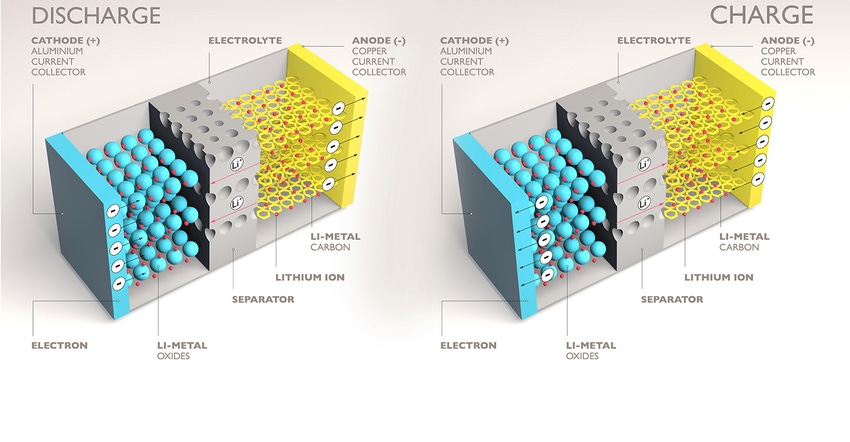Researchers are tracking ion movement in lithium-ion batteries to see what is limiting capacity, paving the way for future enhancements.
October 28, 2022

Researchers have found a key reason for diminished capacity in a certain type of lithium-ion batteries by studying the moving of lithium ions in the cell, a breakthrough that could lead to improved performance in future batteries, they said.
A team led by the University of Cambridge debunked a popular notion about the movement of ions inside a battery, which is that they are stored in a uniform way across individual active particles of the material. But what is true is that their storage is varied, depending on the state of the discharge cycle, researchers said.
Eye on ions
Specifically, the team tracked under a microscope how light interacts with active particles during the operation of a lithium battery using a nickel-rich manganese cobalt oxide (NMC) cathode, allowing them to observe distinct differences in lithium storage during the charge-discharge cycle.
"This is the first time that this non-uniformity in lithium storage has been directly observed in individual particles,” noted Alice Merryweather, one of the researchers from Cambridge’s Yusuf Hamied Department of Chemistry. “Real-time techniques like ours are essential to capture this while the battery is cycling."
Combining experimental observations with computer modelling, researchers found that the non-uniformity of lithium originates from dramatic changes to the rate of lithium-ion diffusion in NMC during the charge-discharge cycle.
Specifically, lithium ions diffuse slowly in fully lithiated NMC particles, a process that is significantly enhanced once some lithium ions are extracted from these particles, researchers said.
Moreover, the lithium heterogeneity observed at the end of discharge establishes one reason why nickel-rich cathode materials typically lose around 10 percent of their capacity after the first charge-discharge cycle, they said.
This finding is significant, as one industrial standard used to determine whether a battery should be retired or not is when it's lost 20 percent of its capacity, noted Chao Xu, a scientist from ShanghaiTech University who worked on the research while he was based at Cambridge.
Informing future designs
The team made their observations with the help of a model that predicted lithium distributions accurately and captured the degree of heterogeneity observed in experiments, noted Shrinidhi Pandurangi, another member of the research team from Cambridge’s Department of Engineering.
“Our model provides insights into the range over which lithium-ion diffusion in NMC varies during the early stages of charging,” she said..
When the battery is near the end of its discharge cycle, for example, the surfaces of the active particles become saturated by lithium while their cores are deficient in the material. This diffusion of lithium results in the loss of reusable lithium and a reduced capacity, researchers found.
"These predictions are key to understanding other battery degradation mechanisms such as particle fracture," Pandurangi said. Indeed, this finding could help inform the development of future batteries to ensure that there is less capacity loss and thus greater efficiency and performance over time, researchers said.
Researchers published a paper on the results of their study in the journal Joule. They said the research can be particularly helpful in developing future batteries for electric vehicles (EVs), which demand devices that allow them to travel longer on a single charge and recharge quickly once depleted.
Indeed, using NMC in the battery electrode is becoming more widely used in top-of-the-line EVs, even though scientists still don't fully understand how lithium transport inside the cathode is linked to the battery's performance.
This is something the research from the Cambridge team can help facilitate, researchers said, which is why they now are seeking new approaches to increase the practical energy density and lifetime of these promising battery materials.
Elizabeth Montalbano is a freelance writer, journalist and therapeutic writing mentor with more than 25 years of professional experience. Her areas of expertise include technology, business and culture.
About the Author(s)
You May Also Like





